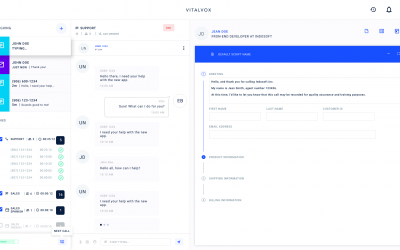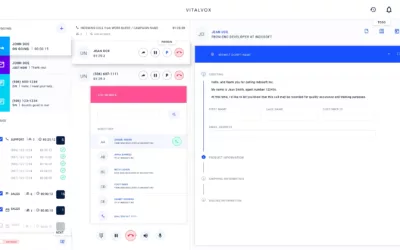Remote work has revolutionized call center operations, offering flexibility and a wider talent pool. However, one major challenge persists—background noise. From barking dogs to street traffic and household chatter, unwanted sounds can disrupt conversations, lowering both customer satisfaction and agent productivity. Therefore, implementing effective noise reduction strategies is essential for maintaining high-quality interactions.
In this article, we’ll explore practical ways to reduce background noise for calls, ensuring remote agents can deliver clear and professional conversations.
1. Invest in Noise-Canceling Technology
One of the most effective ways to minimize background noise is by equipping agents with noise-canceling headsets. These headsets use advanced technology to filter out unwanted sounds, allowing customers to hear only the agent’s voice. Additionally, headsets with active noise cancellation (ANC) and high-quality microphones significantly improve call clarity.
Moreover, software-based noise reduction tools, such as AI-powered background noise suppressors, can further enhance call quality. Platforms like Krisp, NoiseGator, and built-in noise suppression features in communication tools help eliminate disruptive sounds in real time.
2. Optimize the Home Office Environment
A well-organized workspace plays a crucial role in reducing background noise. To create an ideal work environment, agents should:
- Work in a quiet, enclosed space, away from high-traffic areas of the home.
- Use rugs, curtains, and soft furnishings to absorb sound and minimize echo.
- Position their workstation away from windows to reduce external noise, such as traffic or construction sounds.
By making these small but effective changes, agents can create a quieter and more professional workspace.
3. Leverage AI-Powered Noise Suppression
Modern AI-driven noise suppression software can automatically filter out background noise, ensuring crystal-clear conversations. Many call center platforms now integrate AI noise reduction features, making it easier for agents to manage distractions.
For example, Microsoft Teams, Zoom, and various contact center solutions offer built-in noise suppression settings. By enabling these features, agents can ensure that background noise does not interfere with customer interactions.
4. Establish Clear Noise-Reduction Guidelines
Setting clear expectations for noise control is essential for maintaining a professional remote work environment. To help agents reduce background noise, call centers should implement a noise-reduction policy that includes:
- Encouraging agents to schedule calls during quieter periods of the day.
- Avoiding speakerphone use, as it picks up more background noise than headsets.
- Muting microphones when not speaking during virtual meetings to minimize distractions.
When agents follow these guidelines consistently, call quality improves, leading to a better customer experience.
5. Provide Stipends for Soundproofing Equipment
Since not all agents have access to an ideal work environment, companies can offer stipends for noise-reduction tools. This financial support can help agents purchase:
- Acoustic panels or foam to absorb sound and prevent echoes.
- White noise machines to mask disruptive background sounds.
- High-quality microphones that enhance voice clarity while filtering out background noise.
By investing in these solutions, businesses can ensure their remote teams work in a noise-free setting.
6. Train Agents on Virtual Noise Filters
Many communication platforms come with built-in noise filtering features, yet some agents may not know how to enable them. Therefore, providing training on how to use these tools can significantly enhance call quality.
Platforms like Zoom, Webex, and Google Meet offer noise suppression settings that can be adjusted based on the agent’s environment. Encouraging agents to explore and use these settings helps minimize distractions during calls.
7. Offer Flexible Work Schedules
For some agents, background noise may be unavoidable during certain hours. In such cases, offering flexible work schedules can be a great solution. Allowing agents to work during quieter times—such as early mornings or late evenings—can help reduce background noise-related issues.
Furthermore, scheduling breaks strategically can help agents manage interruptions, ensuring they remain focused during customer interactions.
8. Conduct Regular Check-Ins and Assessments
Since remote agents face different noise challenges, regular check-ins can help managers identify and address issues proactively. Conducting test calls and gathering agent feedback ensures that noise-related problems are resolved before they impact customer experience.
Additionally, providing personalized recommendations for noise reduction based on an agent’s specific work environment can further improve call quality.
Final Thoughts on how to Reduce Background Noise for Calls
Reducing background noise for calls is crucial for ensuring smooth and professional customer interactions. By equipping agents with noise-canceling technology, optimizing their home office setups, and leveraging AI-driven solutions, businesses can enhance call clarity and overall productivity.
With the right strategies in place, remote call center teams can maintain exceptional service quality—regardless of their work location.
Contact Us
Are you looking for expert solutions to optimize your remote call center operations? We’re here to help! Contact us today to discover customized strategies that enhance productivity and customer satisfaction.



